Appenzeller Gurt has been using regional leather for the majority of its products for several years. As the name suggests, the leather is tanned in the region, in southern Germany. The raw materials come from the Surselva and Central Switzerland, and we spoke to Nina, the initiator and producer, about topics such as farm slaughter, ecological tanning and patina, and asked why Switzerland has some catching up to do.
Überarbeitete Version des Interviews vom August 2020, veröffentlicht im April 2024.
1. you use the term "regional leather". What is meant by this?
Nina Conrad: This refers to leather that has been produced from its origin - the animal - and throughout the entire production process in the region.
Regional and transparent production is not common practice in the leather industry: the supply chains are long and opaque. Often you don't know where the hide used to make the leather comes from, let alone the conditions under which the animal lived. That's why we want to change this with our production and set a new standard.
Sustainable production is a matter of course for us: this begins with species-appropriate animal husbandry and organic, biodynamic or regenerative farming. We work together with regional abattoirs in Graubünden and central Switzerland, so the transport route for the animals is short and some are slaughtered on the farm - which has become much easier to implement in recent years. This means less stress for the animals. The hides are tanned into leather using purely plant-based methods and without the use of toxic chemicals. This process takes place in southern Germany.
2 What role does the Ueli farm play in this?
Der Ueli-Hof ist eine Bio-Metzgerei in der Innerschweiz. Diese setzt nicht nur auf Qualität, sondern auch auf Verantwortung und Nachhaltigkeit. Die Erzeugergemeinschaft besteht aus Bio-Bäuer:innen, die ihre Tiere in Mutterkuhhaltung aufziehen. Die enge Kooperation mit den Landwirt:innen und die geographische Nähe gewährleistet den respektvollen Umgang mit dem Tier auch auf dem letzten Weg und sichert eine transparente Rückverfolgbarkeit.
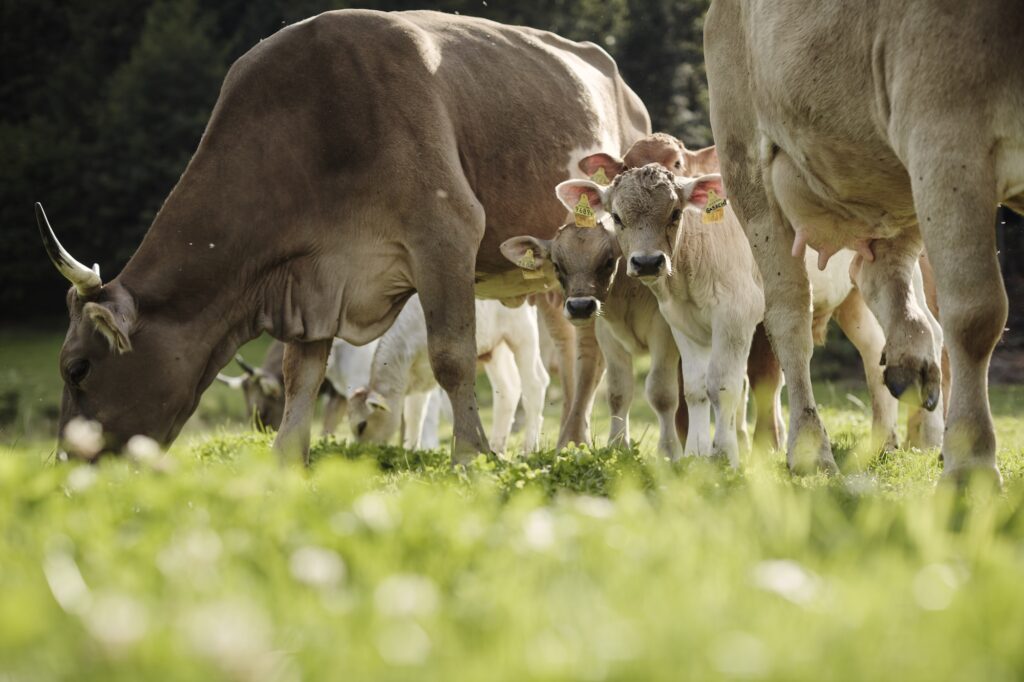

3. an important part of animal welfare is also linked to the slaughter process. How does this happen with your partners?
Nina: The animals all come from the surrounding area - this ensures a short journey. The transport usually takes place in a horse trailer, so the animals are not packed into large trucks and driven across the country. Some of the animals are slaughtered on the farm, an option that more and more farmers are making use of. The process in and of itself takes place "gently" - I phrase this in quotation marks, because can the killing of an animal be "gentle" at all? In my opinion, no. However, my partners take a lot of time for the animals, on average only around 10 cattle are slaughtered in one day - in contrast to conventional slaughterhouses, where up to 40 animals are slaughtered per hour.
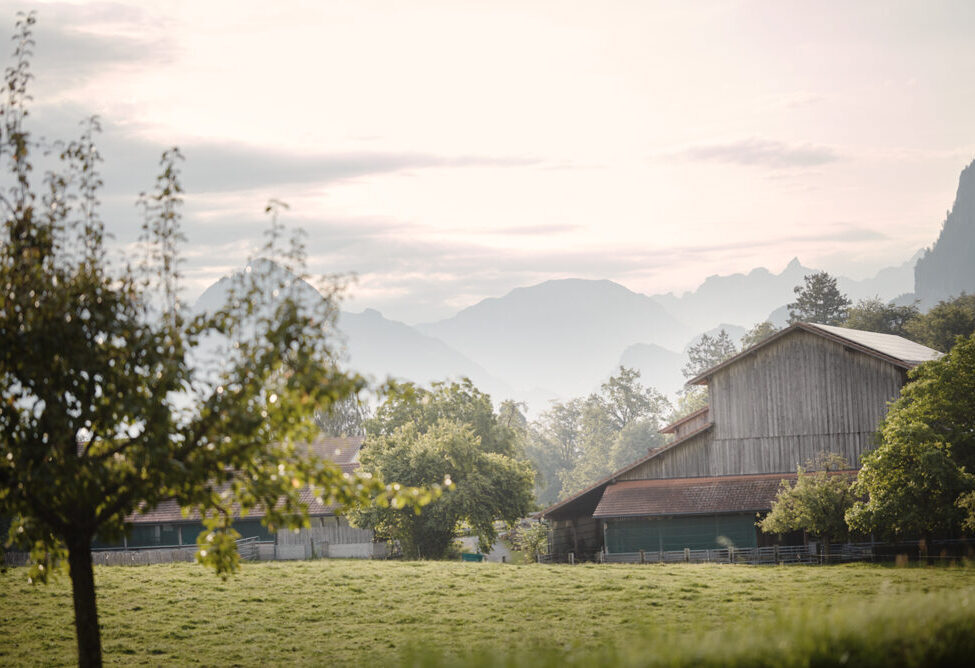
4. where is the leather tanned and dyed and what is special about this process?
Nina: Our leathers are tanned in southern Germany using purely vegetable tanning methods. Contrary to popular belief, synthetic additives are used in the pre-tanning process, but these are ecologically harmless. The composition of the tanning mixture varies from tannery to tannery and is always a well-kept secret. Extracts of quebracho, oak and chestnut wood, tree bark from mimosa and sumac plants as well as tree fruits such as Valonea oak or tara pods are used.
Synthetic, water-based, REACH-certified dyes are used for dyeing, which are harmless and have many advantages over plant-based dyes. Unfortunately, dyeing with plant extracts is extremely expensive as it requires a relatively large amount of extract. The process is very water-intensive, the plant-based dyes cannot be recycled and the color fades quickly.
However, a large proportion of our leather is not dyed, but remains natural. This leather acquires a beautiful patina with use and becomes darker and softer over time.
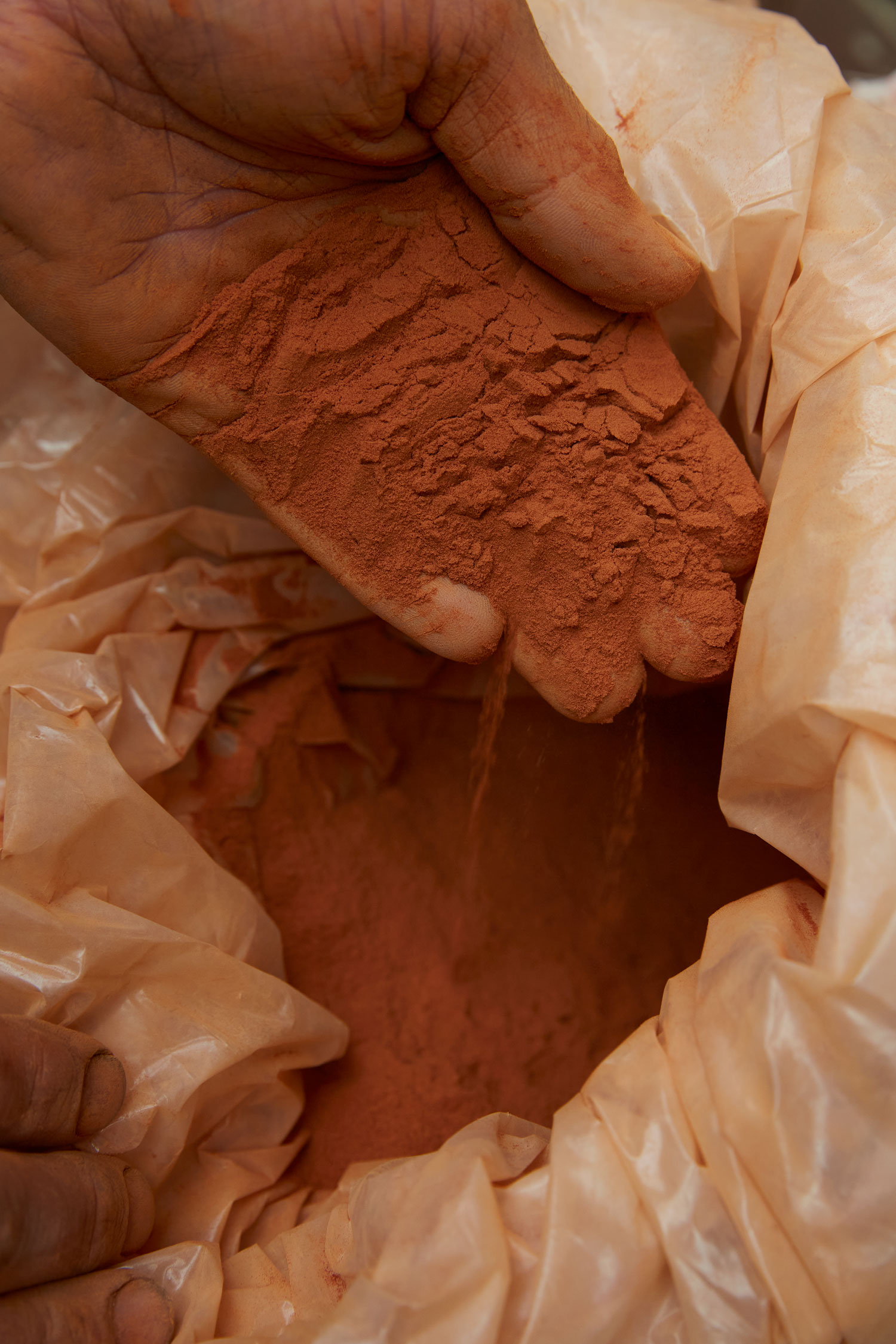
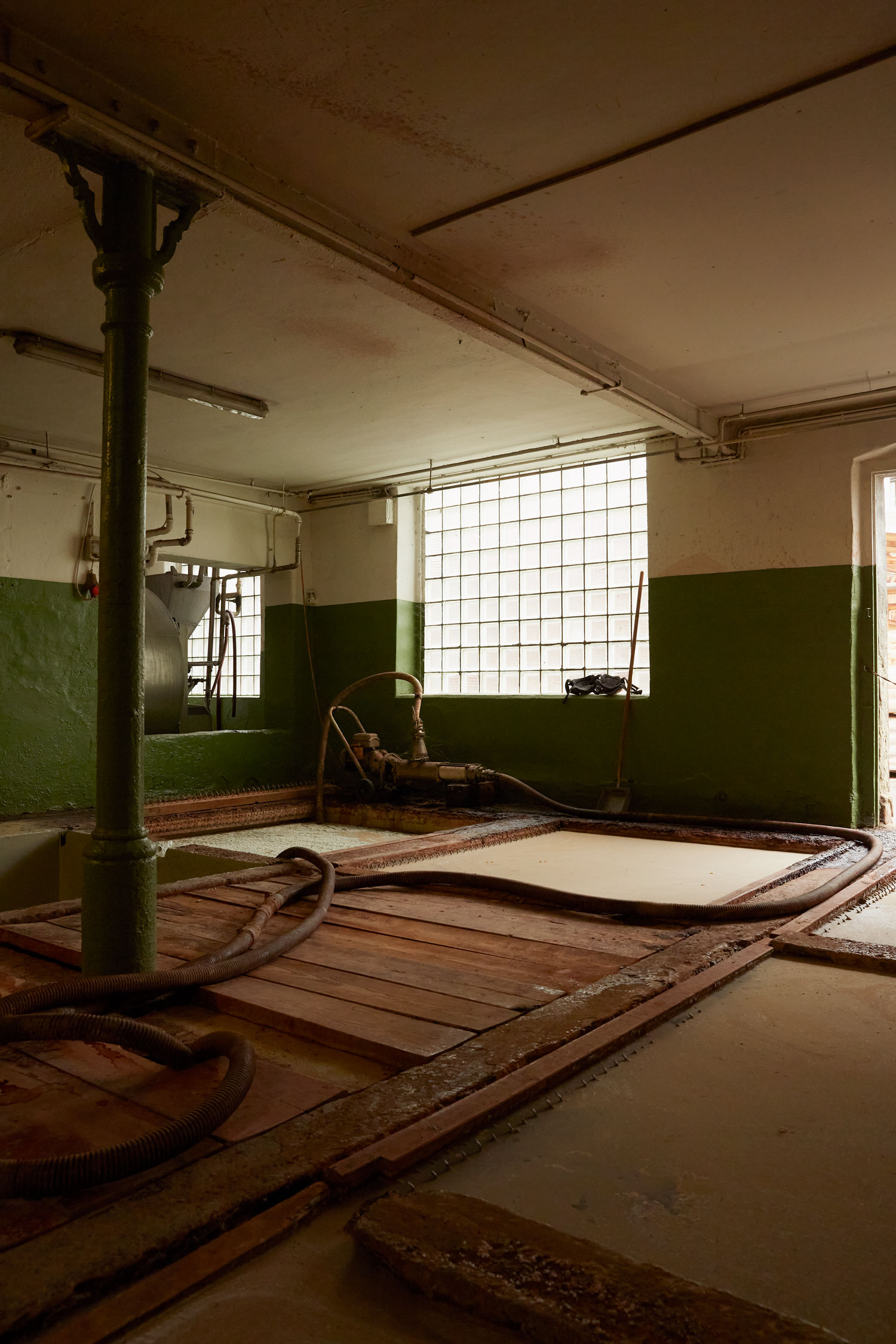
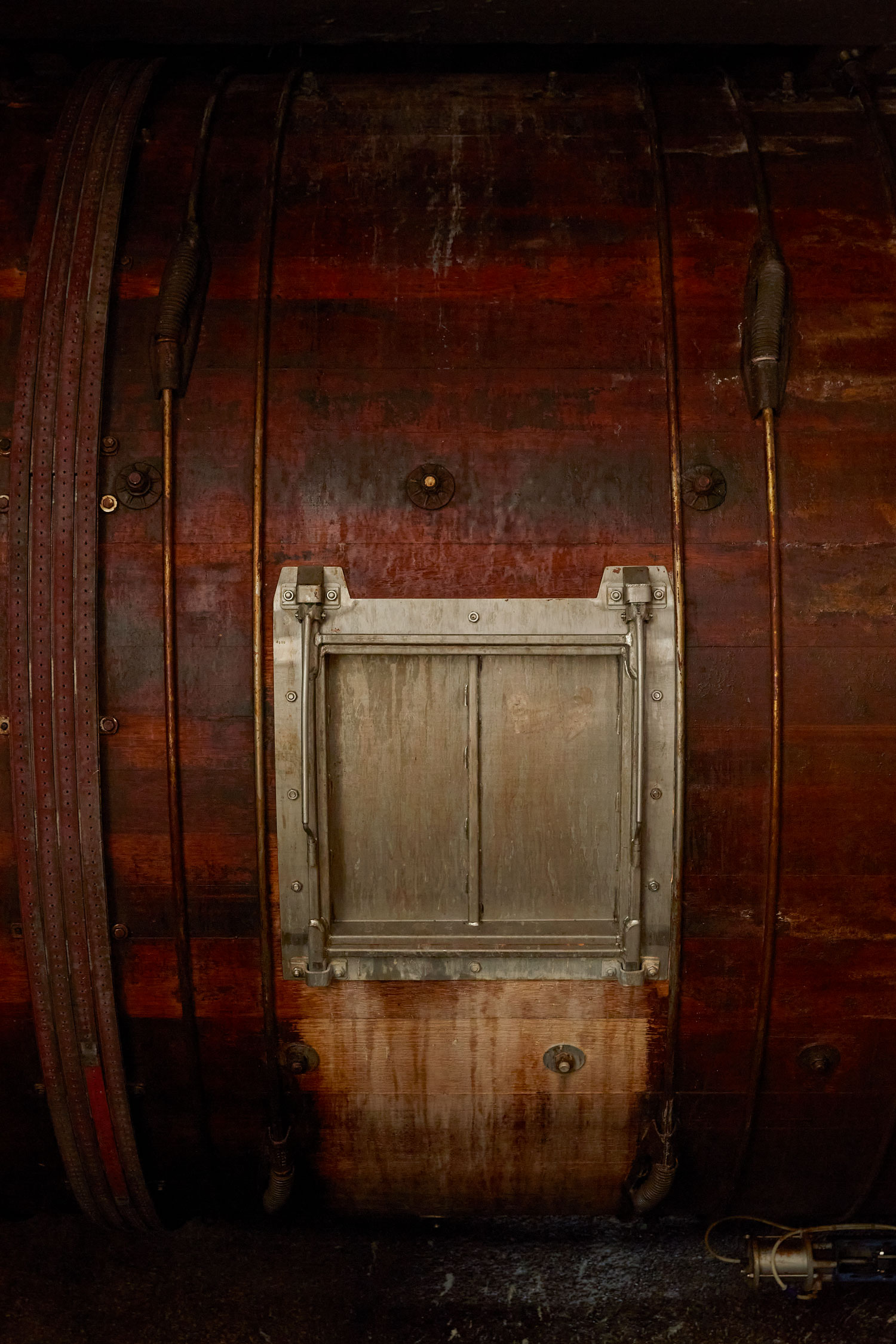
5. cows from Switzerland, but tanning in southern Germany - why not in Switzerland?
Nina Conrad: Our leather is tanned in Germany for one simple reason: There are no longer any tanneries in Switzerland that are geared towards processing larger quantities and can produce leather of a quality that meets our requirements. The tannery is only 40 minutes away from the Swiss border - and is therefore located in our region. In my opinion, regionality does not stop at historically established national borders.
This allows us to keep transportation routes very short and CO2 emissions low. Compared to the Italian tanneries, everything happens under the same roof here - from pre-tanning to finishing. This enables us to guarantee traceability.
«In der Schweiz gibt es keine Gerbereien mehr, die auf die Verarbeitung von grösseren Stückzahlen ausgerichtet sind und Leder in einer solchen Qualität herstellen können.»
Nina Conrad
6. what is the difference between chrome tanned leather and vegetable tanned leather?
Nina Conrad: Many things. The use of tanning agents determines the end product. Compared to vegetable tanning, chrome tanning is much shorter and therefore cheaper. The leather becomes soft and lighter, and the light-colored starting material means that it can be dyed in any color. However, in my opinion, the disadvantages outweigh the advantages: Chrome is a heavy metal which - like most heavy metals, unfortunately - is broken down under unfortunate conditions. When used correctly, the chromium III salts are harmless, but under extreme conditions they can turn into harmful chromium VI. The residues present in the leather can also trigger allergies. Chrome-tanned leather should be disposed of as hazardous waste at the end of its life.
Vegetable tanned leather, on the other hand, is much more environmentally friendly in production. Of course, with vegetable tanning materials you also have to pay attention to how and where they were produced, but their footprint is usually much lower. The pure vegetable tanning takes a lot longer in comparison, which is why the leather is also more expensive to sell. The quality of the leather, however, is much better compared to chrome or synthetically tanned leather, it has a beautiful feel, lasts a lifetime and becomes more beautiful with use.
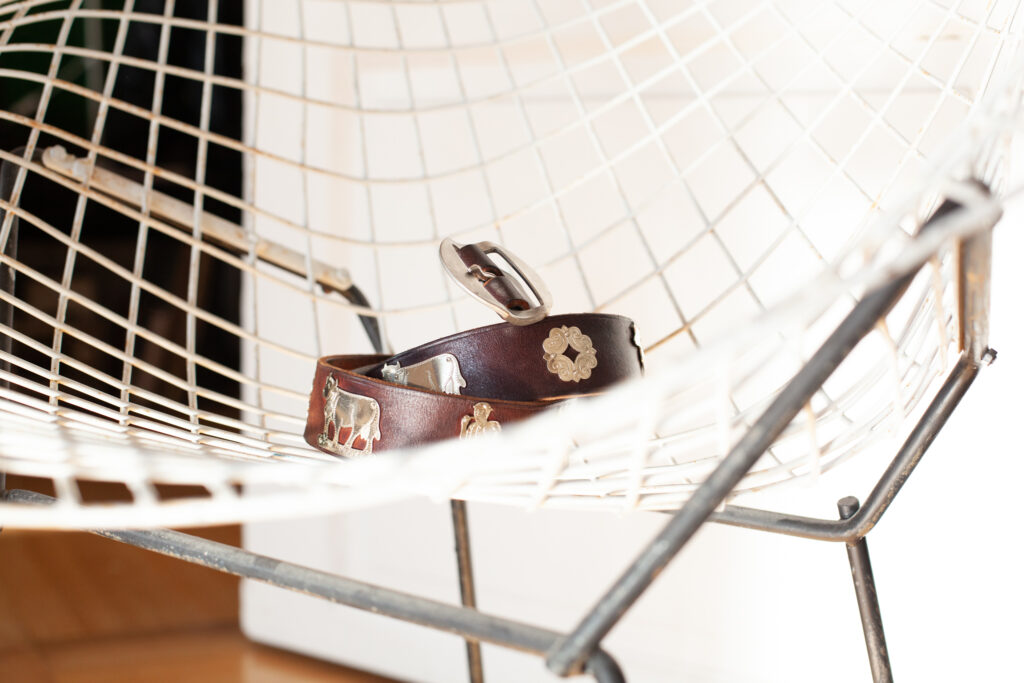
Our leathers are also natural, which means that no finishing is done. This has the consequence that scars, scratches, mosquito bites and skin folds are visible on the leather.
What I would like to mention at this point is that the actual tanning process is just one of many steps in the production of leather. The first process steps, in which the fresh rawhide is freed from dirt, hair and meat residues and thus prepared for tanning, is the most water- and chemical-intensive part.
7 You advise many companies on their production and manufacturing processes and also work for an Emmental leather bag label. What positive trends have you noticed and where do you still see a need to catch up?
The demand for our leather is increasing - I'm really pleased about that! Transparency and regionality in the supply chains are becoming more important. Companies and brands are focusing on different topics: animal welfare, the transportation of live animals, the type of tanning, but also local production and therefore low CO2 emissions from transportation.
There is a lot of ignorance among both companies and consumers - which is understandable given the complexity of the topic. "Vegetable-tanned leather from Italy" or "Made in Florence" is enough for many people to have a clear conscience when buying a product. But if you look more closely - really closely 😉 - these words are often empty shells. A lot of educational work and support is therefore still needed.
This also applies to topics like "vegan faux leather vs. real leather" - there is a lot of ignorance, opinions and discussions are always black and white, although there would be so many shades in between. I always learn a lot in conversations and am always happy when I can contribute with my knowledge and experience.

There is a lot of greenwashing going on. Where can the consumer get information on this? And more importantly, what can consumers do themselves?
Yes, unfortunately. People play on this ignorance and exploit it. You often have to find information yourself. However, there are now many great formats, especially blogs, magazines and podcasts, which prepare and communicate content in a way that is easy to digest and understand. I also really appreciate NGOs like Public eye, which does a great job. The best thing is always to ask! Of course you can also contact me 😉
You can make the biggest difference yourself by taking a closer look, asking questions and scrutinizing. A leather bag in a fast fashion store that costs 120 francs cannot have been produced in an ecologically or socially responsible way. I like to buy second-hand myself and if I buy new, then only from small brands that have a similar philosophy to mine.
Here is a small selection of my favorites:
Podcasts:
Magazine: The Lissome (online and offline)
Lieblingsbücher:
Instagram: @sustainable.critical
Nina Conrad
Nina hat Politik- und Islamwissenschaften sowie Völkerrecht und Ethnologie an den Universitäten Zürich und Barcelona studiert. Nach einigen Jahren im Business Development für Startups und im sozialen Sektor setzte sie ihren Fokus auf den Aufbau regionaler, regenerativer Lieferketten für nachhaltiges Leder.
Heute produziert sie Leder für kleine und grosse Unternehmen, unterstützt als Nachhaltigkeitsberaterin, Produktmanagerin und Projektleiterin diverse Projekte in der Bekleidungs-, Accessoires- und Schuhbranche und lehrt an mehreren Hochschulen. Ausserdem ist sie Gründungsmitglied der Sustainable Leather Foundation und Beraterin einer internationalen Messe. Als Mitgründerin von Fibershed DACH, einer Non-Profit-Organisation mit Sitz in Bern, setzt sie sich aktiv für eine Veränderung der Textilwirtschaft ein.
Nina Conrad
[email protected]
+41 79 675 79 65
regionales-leder.com
Bildmaterial: Angelika Annen, Ueli-Hof AG, Marai



 There are no products in the shopping cart.
There are no products in the shopping cart.